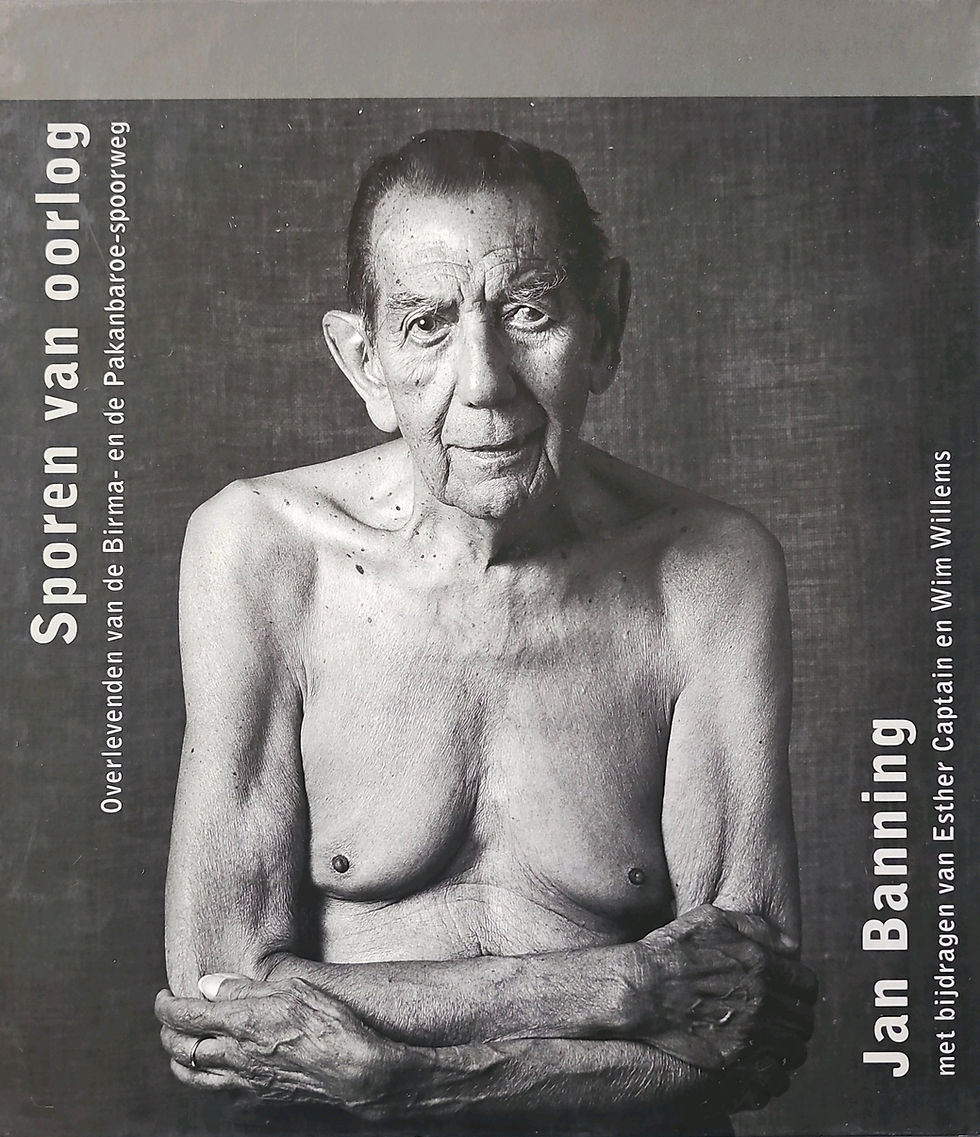Traces of War
- Sep 15
- 3 min read
Photography: Jan Banning
Text: Jan Banning, Esther Captain, Wim Willems
Design: Peter Jonker
2003
Book of the Month September 2025

This time, there are two books in the blog Book of the Month because Jan Banning will give a lecture on Wednesday, September 17, 2025, about two projects for which he published a book: 'Traces of War' and 'Comfort Women'. The full title of the first book is 'Traces of War. Survivors of the Burma and Pakanbaroe Railways'. Jan Banning made portraits of men who worked as forced laborers during the Japanese occupation on the construction of the railways in Burma and Sumatra.
He portrayed them 60 years later, with their upper bodies bare, as they had worked as slaves at the time. Always against a neutral background. This uniformity makes the series strong. One of these portraits is on show on the cover.
The book begins with an introduction by Jan Banning. Through his father and grandfather, he has a personal connection to the subject. His father had worked on the Sumatra railway, his grandfather on the one in Burma. Besides the 68,000 white and Indo prisoners of war, there were also several hundred thousand Asian forced laborers, called 'romusha', a forgotten group. It was among this group that most of the victims fell. Therefore, Banning also wanted to include survivors from this group in his project. He sought out former forced laborers, had them tell their traumatic experiences, and made their portraits.
After Banning's introduction, there is a historical introduction by historian Esther Captain, who lost two family members who had worked on the Burma railway. Then follow the impressive black-and-white portraits. Only after that come the stories. The book concludes with a personal impression by Wim Willems, author of books on the history of Indo-Dutch people.
In 2005, an English edition was published: Traces of War.
Comfort Women
Photography: Jan Banning
Text: Hilde Janssen
Design: Peter Jonker
2009

The series Comfort Women is even more poignant. More than sixty years after the Japanese occupation, Jan Banning, together with journalist and anthropologist Hilde Janssen, searched for survivors of the more than 20,000 female forced laborers during the Japanese occupation of former Dutch East Indies: girls and women who were forced into prostitution in military brothels. But systematic rapes also took place outside of these brothels, even with very young girls. The women were damaged for life, not only psychologically but also physically. Many could no longer have children.
This book was published in a Dutch-English edition. The designer is also Peter Jonker. The portraits are all in color against a neutral, dark background. The women are portrayed frontally, with only their faces visible, focusing on the look in their eyes. The most poignant portrait is on show on the cover.
The book begins with an introductory text by Hilde Janssen, followed by the portraits. This series is regularly interrupted by Japanese propaganda posters (on thin paper). Then follow the traumatic stories of the victims.
Japan denied the existence of military brothels until the 1990s. Jan Banning and Hilde Janssen wanted to document this subject in words and images and searched for the last survivors.
Both books are in the Pennings Foundation library and are for sale in the shop during the exhibition Traces of War by Jan Banning.




Comments